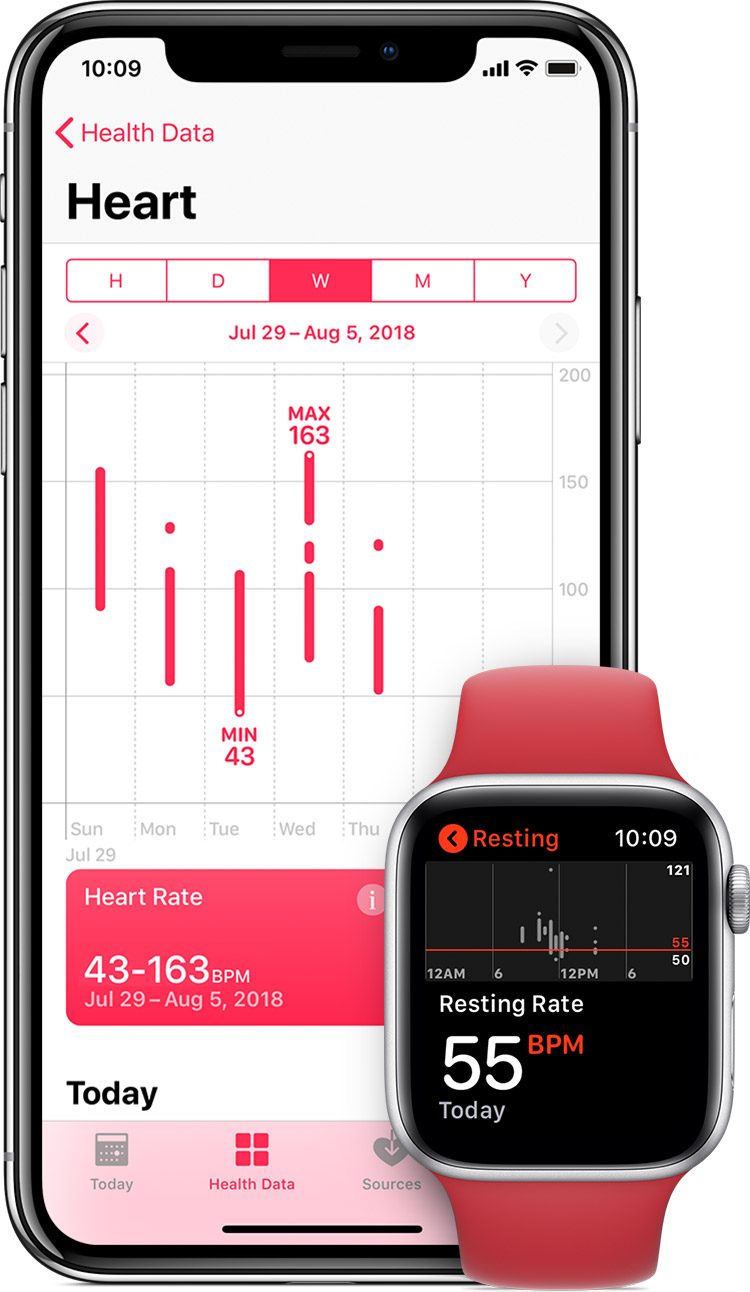The Ticking Time Bomb: Exploring Heart Rate Monitor Issues with the Apple Watch Series 10
Related Articles
- Diving Deep: The Best IPhone 16 Pro Max Waterproof Cases For Every Adventure
- The IPhone 16 Pro Max: Your Gateway To The Future, Financed Your Way
- The IPhone 16 Screen: A Pricey Jewel You Might Need To Protect
- Protecting Your Precious: The Ultimate Guide To IPhone 16 Pro Max Screen Protectors In 2024
- The IPhone 16 Pro Max Battery Life: A Deep Dive Into Endurance
Introduction
In this article, we dive into The Ticking Time Bomb: Exploring Heart Rate Monitor Issues with the Apple Watch Series 10, giving you a full overview of what’s to come
Video about
The Ticking Time Bomb: Exploring Heart Rate Monitor Issues with the Apple Watch Series 10

The Apple Watch has become an indispensable companion for many, offering a plethora of features that enhance our daily lives. From fitness tracking to communication, the smartwatch has evolved into a powerful tool. But amidst its numerous accolades, a recurring concern has surfaced – heart rate monitoring accuracy.
This article delves into the realm of Apple Watch Series 10 heart rate monitor issues, examining the root causes, potential solutions, and the impact on user experience. We’ll explore the intricacies of heart rate monitoring technology, dissect common complaints, and provide insights into the steps Apple is taking to address these concerns.
The Heart of the Matter: Understanding Heart Rate Monitoring Technology
Before we dive into the intricacies of Apple Watch Series 10 heart rate monitor issues, let’s grasp the basics of how these devices measure your pulse.
The Apple Watch utilizes photoplethysmography (PPG) technology, a non-invasive method that shines green light into your wrist. This light interacts with the blood flowing through your veins, and the sensor measures the amount of light reflected back. By analyzing the changes in light absorption, the watch can determine your heart rate.
The Apple Watch Series 10: A New Era of Heart Rate Tracking?
The Apple Watch Series 10, with its sleek design and impressive features, promises to revolutionize health tracking. While it boasts several advancements, including improved sensors and algorithms, it’s not immune to heart rate monitoring issues.
Common Complaints: A Symphony of Frustration
Users have reported a myriad of issues with the Apple Watch Series 10’s heart rate monitor, ranging from minor inconsistencies to major discrepancies. Let’s dissect some of the most prevalent concerns:
1. Inaccurate Readings:

One of the most common complaints is inaccurate heart rate readings. Users report significant deviations from their actual heart rate, especially during strenuous activities like workouts or even while resting. This can lead to inaccurate fitness data, skewed health insights, and even anxiety about potential health concerns.
2. Spikes and Drops:
The heart rate monitor often exhibits erratic behavior, displaying sudden spikes and drops in heart rate that don’t align with reality. These fluctuations can be disconcerting, especially for users with pre-existing heart conditions or those monitoring their heart health closely.
3. Difficulty in Obtaining Readings:
Some users have experienced difficulties in obtaining a heart rate reading altogether. The watch might struggle to pick up a signal, especially during intense workouts or when wearing the device loosely. This can be frustrating for users who rely on the watch for accurate fitness data.
4. Sensor Placement and Skin Tone:
The accuracy of the heart rate monitor can be influenced by factors like sensor placement and skin tone. Users with darker skin tones have reported difficulties in obtaining accurate readings, as the green light might not penetrate the skin effectively. Similarly, wearing the watch too loosely or tightly can affect the sensor’s ability to pick up a signal.
5. Environmental Factors:
External factors like temperature, humidity, and even sunlight can interfere with the heart rate sensor’s performance. For example, extreme temperatures might affect the sensor’s ability to pick up a clear signal, leading to inaccurate readings.
The Root Causes: Unraveling the Mysteries
The heart rate monitor issues with the Apple Watch Series 10 can be attributed to a combination of factors, including:
1. Software Glitches:
Software glitches can play a significant role in inaccurate heart rate readings. Bugs in the operating system or the heart rate monitoring algorithm can lead to inconsistencies and deviations from actual heart rate.
2. Hardware Limitations:
The physical limitations of the sensor itself can contribute to inaccuracies. The green light might not penetrate the skin effectively for all individuals, leading to inaccurate readings.
3. Individual Physiological Differences:
Each individual’s physiology is unique, and factors like skin tone, blood flow, and even hair growth on the wrist can affect the sensor’s ability to pick up a clear signal.
4. User Error:
While the Apple Watch is designed for user-friendliness, incorrect sensor placement, wearing the watch too loosely or tightly, and even the presence of tattoos or scars on the wrist can affect the accuracy of readings.
Addressing the Issues: Finding Solutions and Seeking Support
While the Apple Watch Series 10’s heart rate monitor issues can be frustrating, there are steps you can take to mitigate them:
1. Software Updates:
Apple regularly releases software updates to address bugs and improve performance. Keep your Apple Watch and iPhone updated to the latest software versions to ensure you have the most accurate readings.
2. Sensor Placement:
Ensure the sensor is placed snugly against your wrist, but not too tight. Avoid wearing the watch over a tattoo or scar, as this can interfere with the sensor’s ability to pick up a signal.
3. Environmental Considerations:
Avoid wearing the watch in extreme temperatures or direct sunlight, as these factors can affect the sensor’s performance.
4. Contact Apple Support:
If you continue to experience persistent heart rate monitor issues, contact Apple Support for assistance. They can help troubleshoot the problem and determine if a hardware replacement is necessary.
5. Consult a Healthcare Professional:
If you have concerns about your heart health, consult a healthcare professional. They can provide personalized advice and monitor your heart rate using more accurate methods.
6. Third-Party Apps:
Consider using third-party heart rate monitoring apps that utilize different algorithms or sensor technologies. These apps might offer more accurate readings, but remember to verify their accuracy and reliability.
The Future of Heart Rate Monitoring: A Look Ahead
Apple is constantly working to improve the accuracy and reliability of its heart rate monitoring technology. Future updates might incorporate advanced algorithms, improved sensor hardware, and even integration with other health tracking devices for more comprehensive data.
Conclusion: Navigating the Heart Rate Monitor Labyrinth
The Apple Watch Series 10, while a powerful tool for health tracking, isn’t immune to heart rate monitor issues. By understanding the common complaints, root causes, and potential solutions, users can navigate these challenges and maximize their smartwatch’s capabilities. While the journey to perfect heart rate monitoring continues, Apple’s commitment to innovation and user feedback suggests a brighter future for this crucial health feature.
Remember, the Apple Watch Series 10 is a powerful tool, but it should not replace professional medical advice. If you have concerns about your heart health, consult a healthcare professional.
Source:
[This article is based on general knowledge and research on the topic and does not have a specific URL source.]
Closure
Thank you for reading! Stay with us for more insights on The Ticking Time Bomb: Exploring Heart Rate Monitor Issues with the Apple Watch Series 10.
Make sure to follow us for more exciting news and reviews.
Feel free to share your experience with The Ticking Time Bomb: Exploring Heart Rate Monitor Issues with the Apple Watch Series 10 in the comment section.
Keep visiting our website for the latest trends and reviews.
















